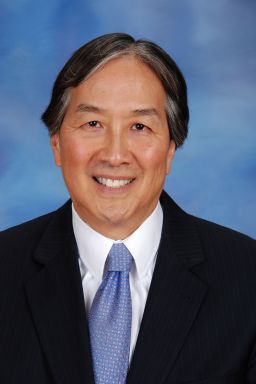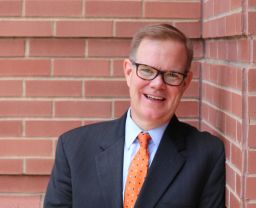Editor’s Note: Dr. Howard Koh is a physician, the former assistant secretary for health in the Obama administration, and professor of the practice of public health leadership at the Harvard T.H. Chan School of Public Health and the Harvard Kennedy School. Dr. Michael Fraser is the chief executive officer of the Association of State and Territorial Health Officials, and affiliated faculty in the Department of Health Administration and Policy at the George Mason University College of Health and Human Services. Views expressed in this commentary are their own. View more opinion at CNN.
To end the Covid-19 pandemic through the most ambitious vaccination campaign in US history, everyone expects state and local public health professionals to do more. But as they ramp up, these officials face continued resistance, harassment and sometimes death threats for encouraging mask usage, social distancing and other preventive measures.


To achieve a healthy new year by vaccinating the necessary 75% to 85% of Americans (far exceeding the percentage that receive annual flu shots), we all must first give public health professionals their own “shot in the arm”: recognition, support and resources from policymakers and the public.
Now is the time for the nation to rally behind public health professionals – an often invisible, underappreciated workforce – as they orchestrate all the highly visible aspects of vaccination from invention to injection.
Following Food and Drug Administration emergency use authorization of the first two Covid-19 vaccines, overstretched state and local public health officials have already coordinated Covid-19 vaccine doses for more than 1.9 million Americans while readying massive efforts to reach hundreds of millions more. Any hope for success requires helping them focus on five major arenas.
Clinic and facility shortages
Vaccinating the vast majority of the population following US Centers for Disease Control and Prevention guidance requires thousands of accessible administration sites to be supported by proper storage, supplies and staff. This means state and local public health professionals must add clinics nationwide to relieve hospitals and medical practices already overwhelmed by the pandemic.
Careful planning can coordinate local and regional capacity. For example, some states have deployed Pfizer vaccines that must be stored at minus 70 degrees Celsius, (minus 94 Fahrenheit) to larger, often urban hospitals with specialized ultracold freezers, while directing Moderna vaccines (which don’t require such storage) to smaller or more rural hospitals or to satellite locations such as pharmacies, businesses, schools, community centers, faith-based organizations and drive-through facilities. State implementation of federal guidance must also ensure access for special communities such as those geographically isolated, incarcerated or homeless, as well as tribal nations.
State and local public health officials must also assure that satellite clinic staff receive special training to achieve broadscale implementation of CDC best practices. That includes issues of pre-ordering, storage and handling of vaccines; monitoring of inventory; clinic flow and physical distancing; supplies (masks, gloves, syringes, needles); intake forms and information systems. Pharmacists, medical assistants and emergency medical technicians, among others, must join in to support traditional nurse vaccinators keep up with demand.
Administration logistics and follow through
To reach national vaccination goals anytime soon, state and local officials must encourage uniform protocols that promote high productivity, throughput and quality. Without them, mass vaccination could easily descend into a logistical nightmare.
Before each administered vaccine, trained clinic staff must address questions about each person’s eligibility and lay out the vaccine risks and benefits, and assure uninsured attendees their medical provider will be reimbursed for vaccination through federal funds.
After administering the first dose, clinic staff must monitor (and possibly treat) anyone who has an allergic reaction, explain how and when to return for a second dose, and communicate dose and safety data back to health providers and health departments. In turn, local and state health authorities can aggregate critical trend data for waiting policymakers, the press and the public.
Equity in distribution
State and local public health officials practice their craft at the epicenter of a dynamic and difficult ethical debate: deciding who gets access – and when – to limited vaccine doses. The CDC has recommended an order of vaccination groups – defined by exposure risk and age – starting with those in health care practices and long-term care facilities, followed by other older individuals and essential workers. But each state must decide how precisely to layer efforts so that the limited initial supply can provide the greatest good to the greatest number of people.
Whenever the FDA authorizes more vaccine candidates for emergency use, adjustments to rollout plans could amplify, but also potentially complicate, efforts to leverage the influx of newly available doses. Dedicated outreach must also reach communities of color, disproportionately hit by Covid-19, that have long harbored distrust in the medical system due to the nation’s shameful history of medical experimentation and discrimination.
Communication
Robust campaigns, adding to a critical $50 million education initiative announced last month by the Ad Council and the Covid Collaborative, must inform a deeply hesitant country about vaccine safety and effectiveness, counter rampant misinformation and send clear messages about who is next up for vaccination.
It helps that prominent public figures, like President-elect Joe Biden, Dr. Anthony Fauci and Vice President Mike Pence, have already received their shots on camera; as many trusted messengers as possible can encourage others to follow suit.
But until vaccination rates reach ambitious national targets, officials must remind an anxious country that the vaccine is not a silver bullet, and everyone – vaccinated or not – must maintain preventive practices including mask usage, social distancing, and hand hygiene.
Officials everywhere, having seen Covid-19 explode to become the leading cause of death for 2020, need the support of an understandably fatigued public to keep their guard up through 2021. To lighten their load, community leaders can join in to hammer home the prevention message.
Funding
State and local public health efforts, hollowed out by years of budget cuts, cannot always be expected to do more with less. Ending the pandemic requires revitalizing a public health infrastructure that has been stretched too thin for too long. The Association of State and Territorial Health Officials applauds Congress for its commitment to $8.75 billion (out of a $900 billion proposed national relief package) for vaccine distribution and infrastructure. This investment should be amplified and sustained over the long run to support the continued development of a modern public health infrastructure we can depend on well into the future.
Get our free weekly newsletter
Hundreds of millions of Americans need to be vaccinated. But any chance for a healthy new year requires that public health officials first get their own shot in the arm of resources and support. It’s time to help them help us. Only then can everyone enjoy a future filled with the miracle of perfectly normal healthy days.

